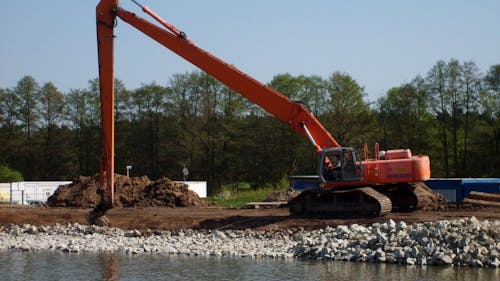Rutgers researchers create device for testing lead contamination

Dredging and commercial shipping along the New Jersey coast can spread sediment contaminated with lead, which is why Rutgers researchers have developed new technology to easily test for lead contamination in sediment.
Lead is a heavy metal toxic to humans at any concentration. A July 2020 article in the peer-reviewed IEEE Sensors Journal describes a device developed at Rutgers that provides a sediment lead analysis within minutes. Traditionally, testing for lead in soil or aquatic sediment is often done through multi-step processes such as mass spectrometry.
Mehdi Javanmard, associate professor in the Department of Electrical and Computer Engineering, is co-author of the paper. Javanmard said that the impetus for the creation of the novel device was to move heavy metal testing from the lab to on-site, which would be an advancement in fighting lead contamination in New Jersey.
Kelly Francisco, a postdoctoral research associate at the Rutgers Center for Advanced Infrastructure and Transportation (CAIT), also co-authored the paper.
“We wanted to make sure that when we did develop a product, it would be sensitive enough to be able to get us down into those parts per billion levels that can be environmentally and health concerning,” Francisco said.
Francisco said that the device uses a micro-fluidic channel which allows a small quantity of sediment to be analyzed, a concept based on team members’ experience in biomedical research.
The technology is projected to be developed for a wide range of health uses, including helping citizens testing their fish for mercury or restaurants measuring levels of lead in their water, Francisco said.
“If you have one of these sensors, you can just slip it right into your sushi roll and see, 'okay, there's no mercury,'” Francisco said.
The device utilizes a sponge made from organic material to protect the sensor matrix from the coarse grains of the sediment, according to the IEEE Sensors Journal. The lead ions travel through the sponge to react with the highly conductive gold electrodes.
Ali Maher, director of the CAIT and co-author, said the analysis the device performs has three main components. First, the sample is placed in the reaction vessel. Second, the sample is chemically digested to release the ions which correspond to a particular contaminant. Finally, the ions are transported to a chamber, where they pass through and react with the electrodes.
“Everything gets done in one stop,” Maher said.
Francisco said the development for the device began in 2016, and the team’s first step was experimenting with different sensor materials that could be layered on top of the electrodes. Obtaining a sensor film that was as smooth as possible was an early goal.
“If the surface area is larger than you're anticipating, you're going to get a reading that's going to be artificially higher,” Francisco said.
Francisco said once the proper sensor matrix had been created, it was a matter of fine-tuning the electrodes. This included comparing reference electrodes against the working electrodes, and how different sensor film materials could be configured.
Maher said the cost difference is beneficial. Between initial site sampling, travel, multi-step testing, returning to the site to determine the borders of the contamination and repeating the process again, traditional testing is expensive. By contrast, the novel device has less overhead.
“It's relatively inexpensive, so we could spatially cover a much bigger area. And that will give us a much better idea of then deciding on where to go,” Maher said.
Maher said the plan going forward is to configure the device to be taken out on a boat where multiple chambers would analyze samples in succession. Other current plans include further fine-tuning of the sensing capacity and making the device durable for a wide range of field situations.
The sensor technology can also be extrapolated for detecting lead in city water systems and the detection of other harmful compounds like cadmium, zinc and arsenic, Maher said.
“What we'd love to see is that we can mass produce this technology,” Francisco said.
The device is projected to undergo the testing needed for commercialization within the next two to three years with the ultimate design of the device being hand-held and completely mobile, Javanmard said.



